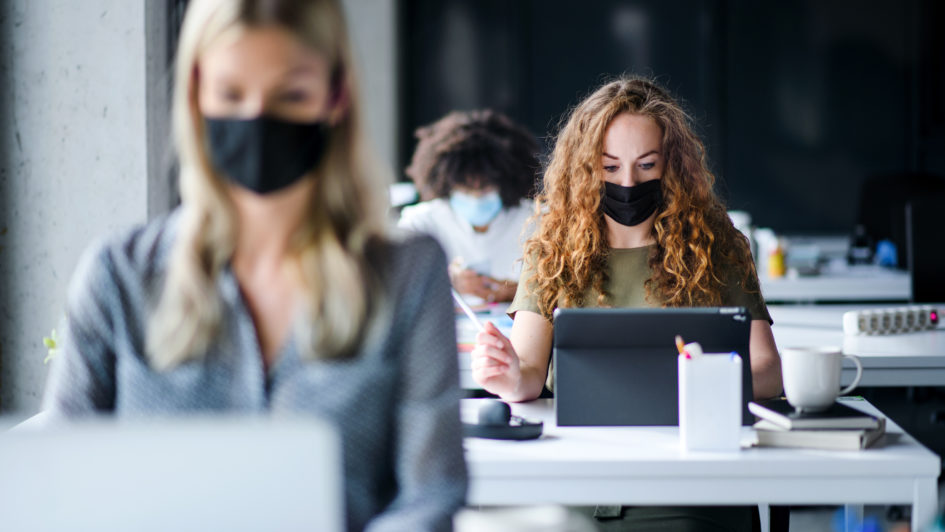Wearing a face mask in public has become largely an everyday occurrence. What do you notice when you put on your mask? Do your glasses fog up immediately? Do you suddenly become more aware of your breathing? Do you notice your breathing becoming quicker? Do you notice no change at all? Whether you experience all or none of these sensations, wearing a facemask can be an immediate reminder to focus on mindful breathing.
Wearing a Facemask
Is there a correct way to breathe while wearing a facemask? According to SOS Clean Room Supplies:
“The proper way to breathe with a mask on is in through the nose and out through the mouth. Breathing this way helps to protect you and the environment. When you breathe in through your nose, your nose helps to filter out the air you breathe. When you breathe out through your mouth, your mask will let the air escape more quickly than if you were to breathe out through your nose.”
The American Lung Association offers four tips for adjusting to wearing a facemask regularly:
- Think positive. Keep your mind calm and positive.
- Practice at home. Start by wearing your mask for short periods of time while completing different activities at home. Become familiar with how your body and mind react while wearing a mask.
- Get creative. If your current option is not comfortable, try a different face covering. If the ear straps cause discomfort when wearing your mask for extended periods of time, try sewing a button on each side of a hat (above your ears) and hook your mask straps on the buttons, rather than resting on your ears. Creative solutions can help make your mask experience more comfortable. While exploring options, remember the CDC’s many recommendations for cloth facemasks. Visit cdc.gov/coronavirus to read more.
- Talk to your doctor. If you need additional support, contact your health care provider for possible solutions for your specific needs/situation.
Mindful Breathing
Deep breathing and mindful breathing exercises are forms of mindful meditation, which can help you maintain an inner calm and bring your attention to the present moment. When practicing mindful meditation, try not to think about the past or worry about the future, but rather focus on the here and now. Being aware of our breath is one way to anchor to the present moment. Benefits include improved mood, lower blood pressure and heart rate, and improved reaction to stress.
There are countless ways to practice mindful breathing exercises. As you breathe, you can simply say to yourself, “in” and “out.” You may notice the sound of your breath while exhaling from your nose or mouth. You may feel the sensation in your nose, chest or belly as you breathe. You may feel the warmth of your breath. These sounds and sensations likely will be amplified when wearing a face covering.
If you are interested in more mindfulness topics, read on to these additional blog posts:
Sources:
“How to Properly Wear and Breathe Through a Face Mask, Part 2,” soscleanroom.com, Oct. 15, 2015.
“Steps You Can Take to Get Used to Wearing a Mask,” lung.org, accessed on June 12, 2020.

